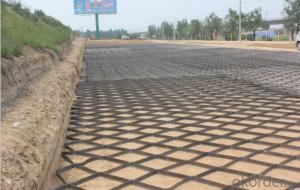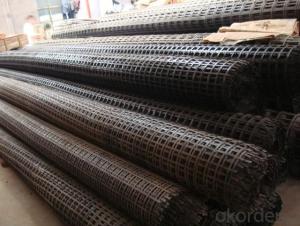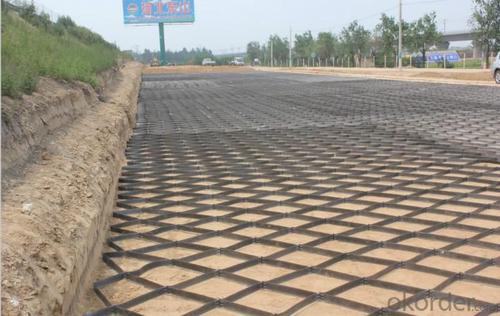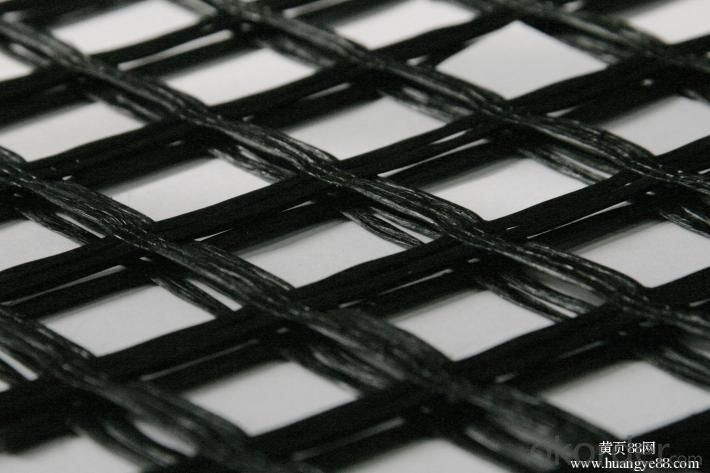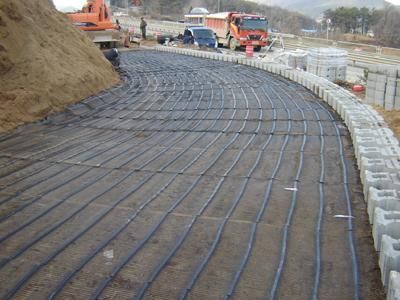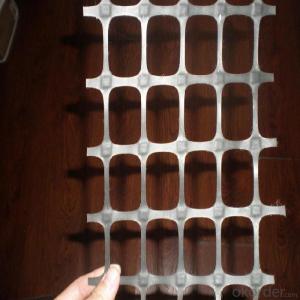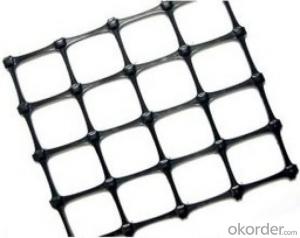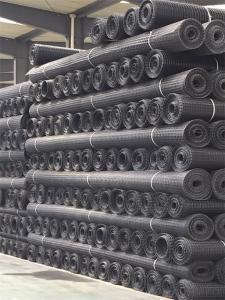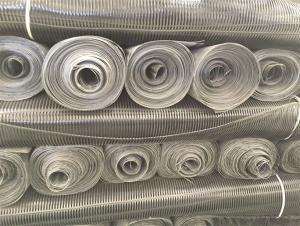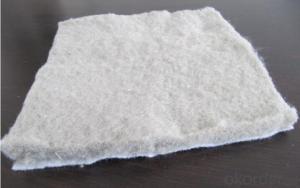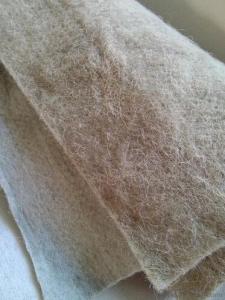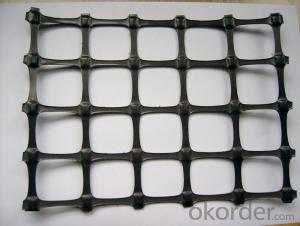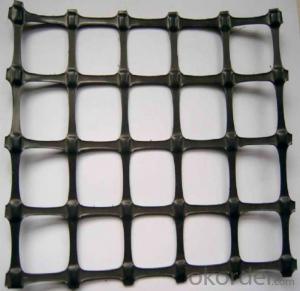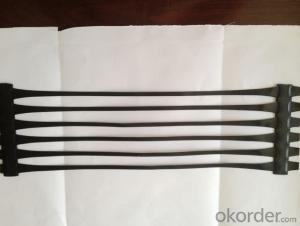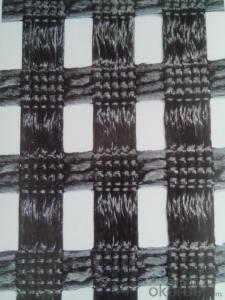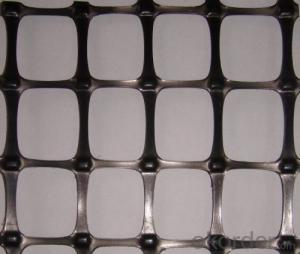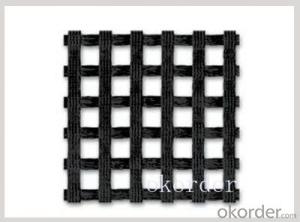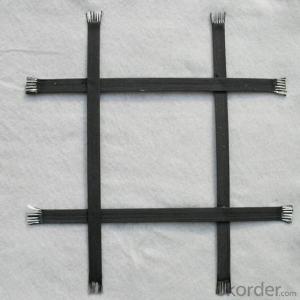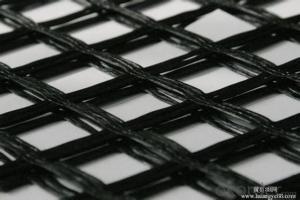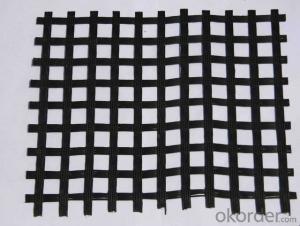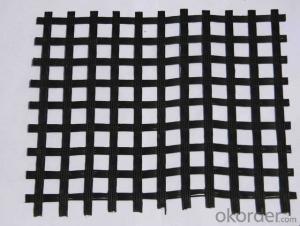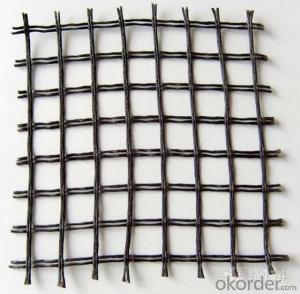Vegetated Biaxial Geogrid for Road Construction Material
- Loading Port:
- Shanghai
- Payment Terms:
- TT OR LC
- Min Order Qty:
- 85800 m²
- Supply Capability:
- 1000000 m²/month
OKorder Service Pledge
OKorder Financial Service
You Might Also Like
The Description of Biaxial Geogrid
Biaxial Geogrid is a kind of new favorable earthwork base material to strengthen the road surface and roadbed. This product is made by weaving and covering fiberglass filament. It is featured by high vertical and horizontal tensile strength, low unit extension, high flexibility, and favorable high and low temperature resistance. The products after surface covering own the favorable property of alkali resistance and aging resistance.
The details of Biaxial Geogrid
| Type: | Geogrid | Material: | Biaxial Geogrid | Place of Origin: | China (Mainland) |
| Certificates: | CE,ISO | Color : | White & Black | Width : | 1m--6m |
| Length | 50-200m | Mesh Size: | 10-40mm | Tensile Strength | 30KN-300KN |
| Area Weight | 130-900g/sm | Package | PP bags or PE film | Approximate mesh size | 12.7*12.7 25*25 40*40 |
Packaging & Delivery
| Packaging Details | PP bags or PE film. Or Packed as customers' requests; |
| Delivery Detail | 10-20days after see the payment. |
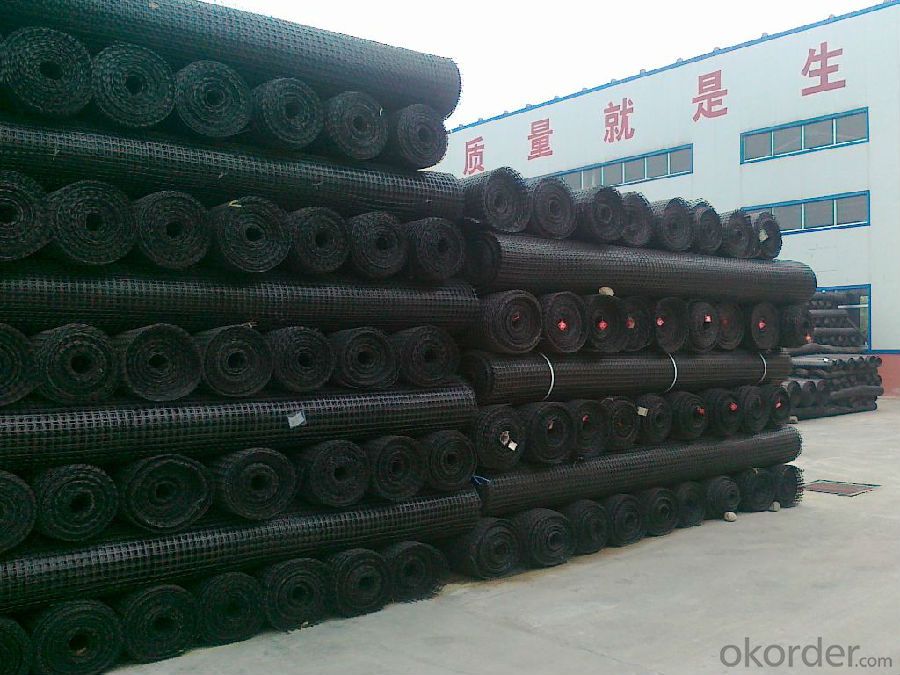
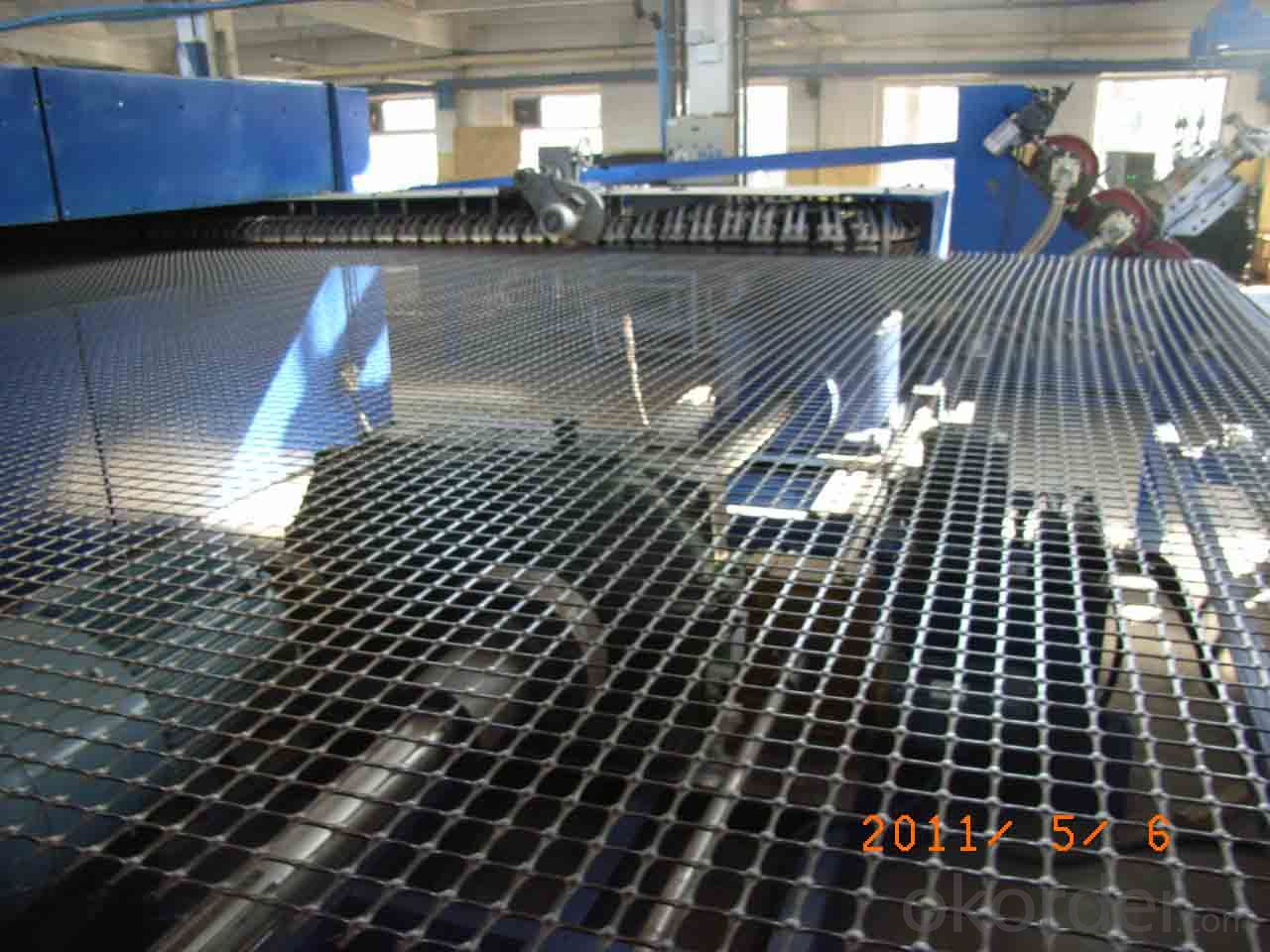
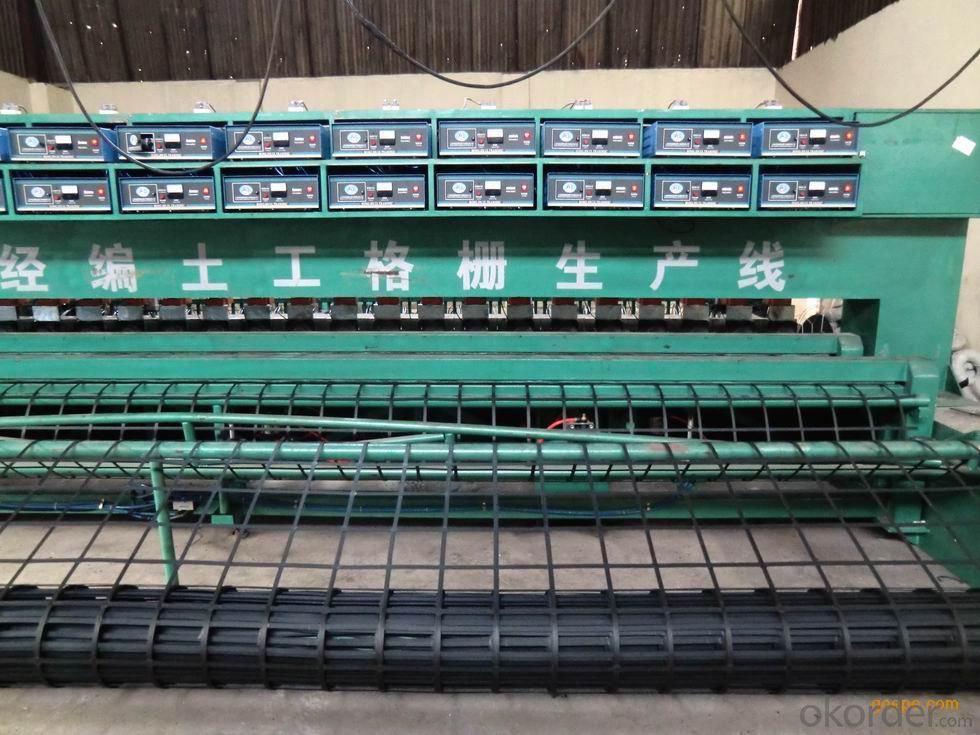
Remarks: we are very large fortune 500 enterprise with more than 20branches in worldwide, and have almost ten years export experience in geosynthetic field. We have kunlun bank account and have many Iran geosynthetics customers.So if any question or support, please just feel free to contact me at any time.
- Q: Can geogrids be used in reinforcement of bridge abutments on expansive soils?
- Yes, geogrids can be used in the reinforcement of bridge abutments on expansive soils. Geogrids are typically made from high-strength materials such as polyester or polypropylene, which provide improved tensile strength and stability to the soil. By placing geogrids in the soil around the bridge abutments, they can help distribute the load and reduce potential soil movement caused by expansive soil conditions. This reinforcement technique can effectively enhance the stability and longevity of bridge abutments on expansive soils.
- Q: How do geogrids enhance the stability of steep highway embankments?
- Geogrids enhance the stability of steep highway embankments by providing reinforcement and confinement to the soil. These grid-like structures are installed within the embankment, creating a stable platform that distributes the load more evenly. This prevents soil erosion, slope failures, and lateral movement, ultimately increasing the overall stability and safety of the embankment.
- Q: What are the long-term performance monitoring requirements for geogrids?
- The long-term performance monitoring requirements for geogrids include regular inspections to assess any changes in the material's physical properties, such as tensile strength and elongation. Additionally, monitoring the geogrids' interaction with the surrounding soil and any signs of deformation or deterioration is vital. This can be done through periodic measurements of settlement, strain, and slope stability. Long-term monitoring also involves assessing the effectiveness of the geogrids in retaining soil and preventing erosion over time. Overall, continuous evaluation of geogrid performance ensures their durability and effectiveness in the intended applications.
- Q: Are geogrids effective in reducing soil erosion?
- Yes, geogrids are effective in reducing soil erosion. Geogrids are engineered materials that can be placed in soil to stabilize it and prevent erosion. They provide reinforcement to the soil, increasing its strength and resistance to erosion caused by wind, water, or other factors. By reducing soil erosion, geogrids help to maintain the integrity of slopes, embankments, and other structures, ultimately protecting the environment and promoting sustainable land use.
- Q: How do geogrids help in reducing construction costs?
- Geogrids help in reducing construction costs by providing reinforcement to soil and improving its stability, which eliminates the need for expensive excavation and replacement of weak soil. They also allow for the use of less expensive and locally available fill materials, reducing the need for transportation and disposal costs. Additionally, geogrids help in the construction of thinner and lighter structures, reducing the amount of expensive construction materials required.
- Q: What is the tensile strength of a geogrid?
- The tensile strength of a geogrid refers to its ability to resist stretching or breaking under tension or pulling forces. It is typically measured in units of force per unit of cross-sectional area, such as pounds per square inch (psi) or kilonewtons per square meter (kN/m²). The specific tensile strength of a geogrid can vary depending on its material composition, design, and manufacturing process.
- Q: How much cheaper than steel reinforced plastic geogrid
- Specifications of different prices, the general specification of 4 to 6.5 square.
- Q: Are geogrids suitable for use in steep slopes?
- Yes, geogrids are suitable for use in steep slopes. Geogrids are specifically designed to provide reinforcement and stability to slopes and can effectively prevent soil erosion and slope failure. The interlocking structure of geogrids helps to distribute the load evenly, improve soil confinement, and enhance the overall strength of the slope. Thus, they are a reliable and efficient solution for steep slope stabilization.
- Q: Bidirectional geogrid 5 meters long side, short side of the 3 meters
- Bidirectional geogrid is a grid like
- Q: Glass fiber grating with large pulling force for Expressway
- The glass fiber geogrid is made of glass fiber alkali free roving as the main raw material, and the net structure material is made by certain knitting technology
Send your message to us
Vegetated Biaxial Geogrid for Road Construction Material
- Loading Port:
- Shanghai
- Payment Terms:
- TT OR LC
- Min Order Qty:
- 85800 m²
- Supply Capability:
- 1000000 m²/month
OKorder Service Pledge
OKorder Financial Service
Similar products
Hot products
Hot Searches
Related keywords
